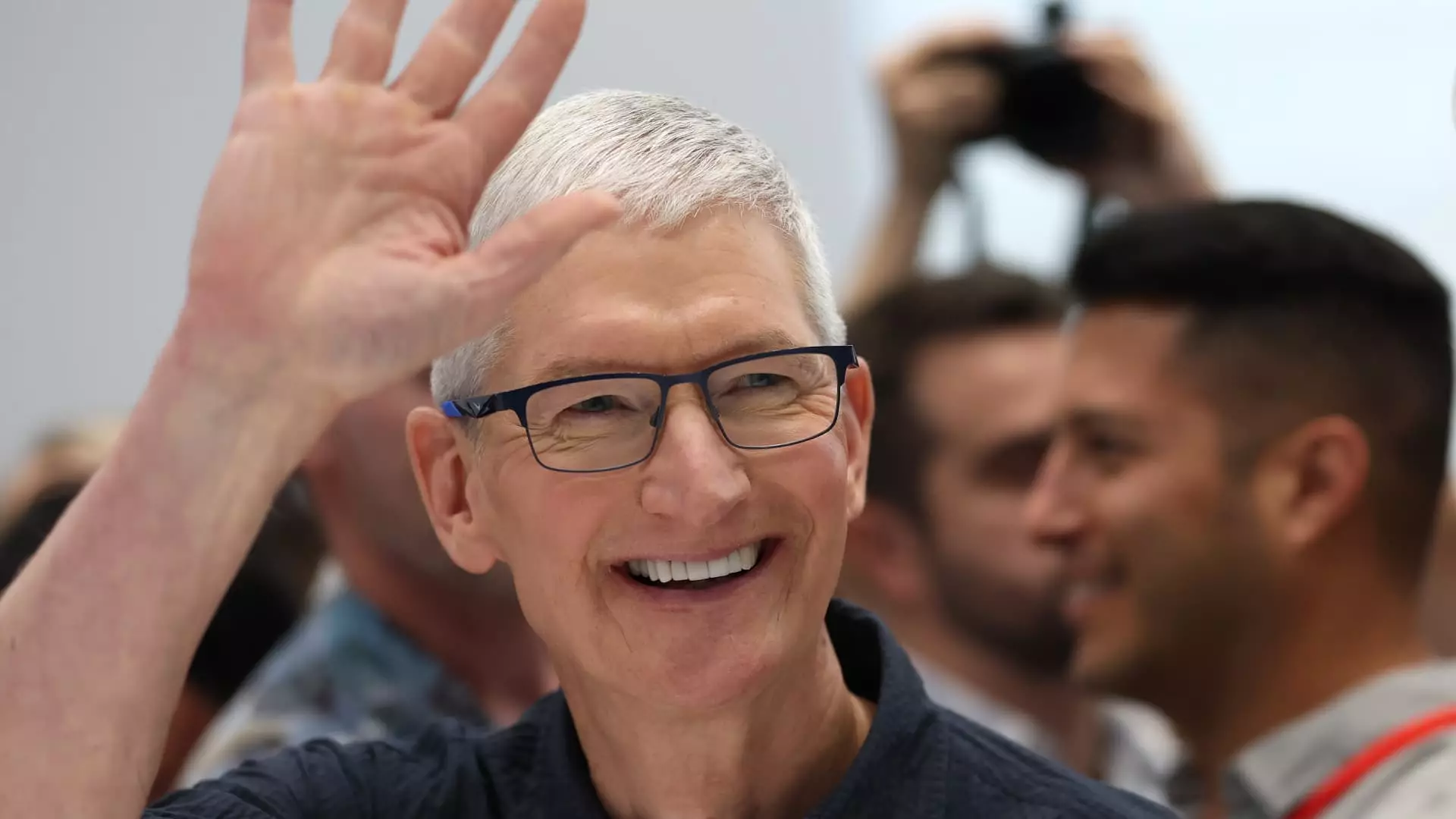Apple Inc. has reclaimed its position in the financial spotlight, as shares surged to record levels on Tuesday, achieving an intraday high of $237.49. This performance comes despite a backdrop of apprehension voiced by Wall Street analysts regarding the performance of the latest iPhone 16, which features advanced artificial intelligence capabilities. The juxtaposition of rising stock prices with analyst caution reveals a complex narrative in the tech giant’s market dynamics, thereby inviting a deeper exploration into the factors contributing to Apple’s renewed vigor.
One major catalyst for the stock’s impressive performance is the latest data released by the International Data Corporation (IDC), which revealed a 3.5% increase in iPhone shipments during the third quarter, reaching 56 million units. Notably, this figure was significantly above Wall Street’s expectations of 50 million, suggesting a potentially lucrative revenue upside between $2 billion to $4 billion, according to analysts from Morgan Stanley. The resilience of Apple’s market share, which remains stable at about 17.7%, reinforces its second-place standing in the global smartphone landscape, trailing Samsung’s 18.3%.
Prominent industry commentators, such as Nabila Popal from IDC, highlight the strong performance of older models, specifically the iPhone 15, which has benefitted from robust marketing efforts and promotions centered around Apple’s upcoming suite of generative artificial intelligence tools, dubbed Apple Intelligence. This strategic marketing foresight positions Apple to enhance consumer engagement during the vital holiday season, further driving sales as customers look to upgrade from earlier models, including the iPhone 13 and iPhone 12. Apple’s anticipation of this trend signals a forward-thinking approach to consumer technology that may set the stage for sustained growth.
Despite the growing optimism reflected in IDC’s positive data, a significant portion of Wall Street remains skeptical regarding the new iPhone 16 lineup. Analysts from renowned firms such as JPMorgan, Barclays, and Bank of America have pointed to decreased shipping times for these models as indicative of weaker consumer demand. This skepticism juxtaposes the buoyant sentiment driven by overall shipment growth and market resilience.
However, not all market analysis converges on pessimism. Evercore ISI recently issued a tactical “outperform” rating for Apple before its forthcoming earnings report. Analysts suggest that a modest performance that meets market expectations could stimulate further appreciation in Apple’s share value. It’s essential to recognize that in a market as volatile as technology, contrasting analyses can create buying opportunities for savvy investors who can discern the potential misalignment between market price and underlying business performance.
In the larger context, Apple’s recent stock movement, alongside a slight downturn in major competitors like Nvidia, indicates Apple’s strong competitive position entrenched in the market. As Apple vies for the title of the most valuable publicly traded company—with a market cap hovering around $3.55 trillion—its innovation-centric approach remains a hallmark of its strategy. It has continually leveraged advancements in technology, focusing on seamless integration of AI into devices, offering consumers compelling reasons to upgrade.
Jim Cramer, a prominent financial analyst, suggests that the IDC data reveals an optimistic future diverging sharply from prevalent concerns in the investment community. Cramer’s assertion that Apple’s stock represents a long-term holding opportunity reinforces the notion that strategic investments in innovation can yield significant long-term benefits, especially as AI applications become more central to consumer needs.
As we gaze into the future, the anticipated rollout and expansion of Apple Intelligence could usher in a new era for Apple. With consumers increasingly seeking products that future-proof their purchases, Apple’s strategy appears to hit the right notes. The company’s adeptness at leveraging consumer trends and expanding its tech ecosystem can catalyze customer loyalty and continued sales growth.
Although Apple faces mixed sentiments from Wall Street, the company’s ability to learn from market dynamics, respond to consumer demands, and innovate relentlessly sets it apart from its competitors. The successful launch of AI-enabled products serves not only as a revenue generator but also as a potential transition point towards establishing a broader technological leadership in the marketplace. If the past is indeed prologue, Apple’s resurgence could very well advance into an era of unprecedented profitability driven by the merging of cutting-edge technology with consumer expectations.

